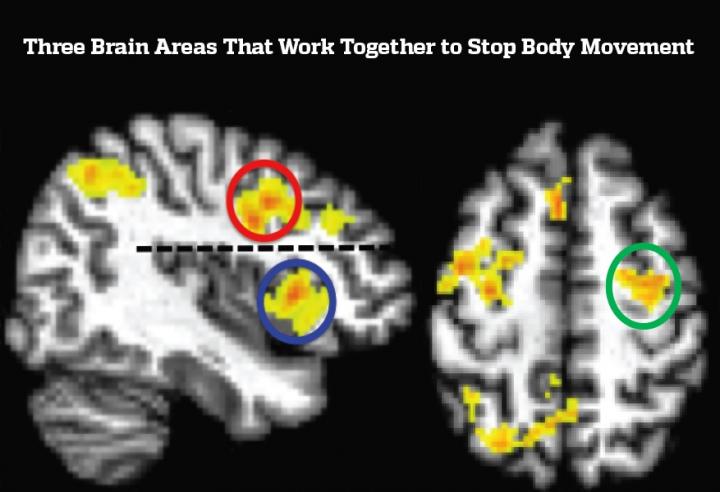How Does Your Brain Stop a Task It Already Started?

To stop an activity, your brain must engage in very precise timing that involves the careful coordination of three distinct areas of the brain, new research has found.
The findings, set to be published on Dec. 20 in the journal Neuron, help explain how people switch tasks once they've already begun them.
The research may help demystify how your brain handles quick decisions like those that happen when you're driving. Imagine you come around the corner, driving the speed limit. Up ahead, a traffic light turns yellow. You're not going to make it, but if you accelerate you can squeeze by just after the light turns red. You decide to put your foot on the gas pedal — but wait! There, in the parking lot, a cop car keeping watch on the intersection. Can you stop your foot in time to avoid getting a ticket for your irresponsible driving?
Certain parts of your brain determine if you'll succeed, the researchers found.
"When we approached this study, we intended to figure out what this one specific area [of the prefrontal cortex region of the brain] was doing," said lead study author Kitty Xu, who was doctoral student at Johns Hopkins University in Baltimore when she did the research. She is now a researcher at Pinterest. [3D Images: Exploring the Human Brain]
But when the study participants had their brains scanned while performing an action-stopping test, the researchers found that at least three brain regions were involved: two parts of the prefrontal cortex, which is an area of the brain involved in planning, as well as the pre-motor cortex, which is an area that's less well-understood.
The one area of the prefrontal cortex that the researchers originally intended to study can be thought of "as a CEO [who] sends out signals to other parts of the brain," which act like managers "who actually do the work," Xu told Live Science.
Get the world’s most fascinating discoveries delivered straight to your inbox.
The timing involved in stopping or failing to stop a motion the brain has already decided to do requires incredibly fast mental work, the study found. A tenth of a second one way or another can mean the difference between speeding through a red light and coming up short. And as people age, the mechanisms that keep the brain making those decisions at top speed break down, and it becomes harder to reverse course, Xu said.
The action-stopping game used in the study was simple, involving starting and stopping eye movements in response to different symbols projected on a screen.
Xu said that she tried the game herself. "It can be frustrating at the beginning when you're first learning, but over time if you are staying alert you can perform this task," she said.
Indeed, the 21 volunteers in the study could learn the game after reading the instructions, but then typically needed a lot of practice to get it right, Xu added.
This wasn't the case for another one of the research subjects: a single macaque monkey, who was also taught to the play the game while the scientists studied the animal's brain. Human brains can be studied only at the macro scale, through magnetic resonance imaging, but a monkey offers researchers the opportunity to (ethically) stick electrodes into living brains to study neurons at work.
The monkey needed a bit more coaxing and to have its head fixed in place so the primate wouldn't destroy the equipment or disrupt the game, Xu said. But "over the time, the monkey learns very well — just as good as humans if not better," Xu said.
Ultimately, the researchers found that the brains of both species of primate tackled the problem of stopping an already-started action in similar ways.
Originally published on Live Science.




